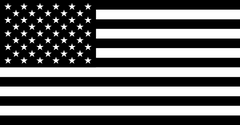We Need to Talk About African Cotton
We just went down a rabbit hole, tracing the past, present, and future of cute ’n fluffy cotton. It’s not cute at all, in fact. Cotton politics are quite gnarly. But potentially very exciting. Pay attention.
Words: Bielle Bellingham
Next time you pull on your incredibly comfortable, breathable cotton sweat, take a moment to think about what it's made of, and who had a hand in making it. We need to start thinking about farmers when we think about our clothes – just like we do with our food. That sweater started with a precious cotton seed, planted and cared for by a farmer. It was harvested, processed, spun, dyed, sewn, distributed, and so on.
One of the world’s oldest commercial crops, cotton’s history is intricately connected to the history of capitalism, slavery, colonialism, exploitation and industrialisation. It’s arguably the most profitable non-food cash crop. Why? Because it makes up approximately 26% of all fibre used in the fashion and textiles industry. It’s basically the epicentre of global fashion’s footprint. And fashion’s reckoning has finally arrived. The industry is having to confront some scary facts, chief among them the effects of rampant overconsumption and criminal underpayment of the people powering its supply chain. The cotton industry shines a harsh light on these failures, but also offers promising solutions for badly needed transformation.
At last count, there are about 7.6 billion of us humans. Did you know that cotton is actually the main source of income for up to 1 billion people? (Source), of which 100 million are farmers? As a global commodity, it also plays a significant role in the economic and social development of emerging economies (employing almost 7% of labour in West and Central Africa, India, and Pakistan). Transforming the cotton industry will have a major positive impact on the planet.
WHAT EXACTLY IS IT?
Cotton is a soft, fluffy natural fibre that grows in a ball around the seeds of the cotton plants (Gossypium). As a plant and natural fibre, it is innately circular. Unlike synthetic products, it biodegrades naturally, can be reused and recycled, and all the parts of the plant can be used. It also plays a key role in the food industry, as its seeds are rich in oil and protein. When woven or knitted, it creates a soft, strong fabric that is washable, breathable and absorbent.
AFRICAN COTTON PRODUCTION
Over the years, the biggest global producers of cotton have been America, India and China. But that’s shifting. In the more developed areas, cotton is grown on large modernised plantations using more mechanised technology and systems, but in Africa and other emerging areas, it is almost exclusively cultivated by smallholder farmers (less than twenty hectares) using crop rotation and labour-intensive production like hand weeding and picking. This takes much longer, but it also has major benefits compared with machine harvesting. Machines make one pass through the cotton field taking everything in the field; but human pickers work in a much more careful and sustainable manner, taking only completely mature bolls. The result? Cotton that’s of a far superior quality.
Despite the many challenges these smallholder farmers face, cotton still provides a cash income, which alongside subsistence crops, can pay for education, medicine, and other necessities. If farmed sustainably, cotton can give millions of cotton farmers a decent income and help them improve their lives.
Cotton production in Africa specifically could be augmented by increasing the seed availability, supporting agricultural research, and also by opening up the world market for the sale of the more sustainable African cotton. Research has proven that a small increase in the cotton seed price would radically improve the lives of farmers, with very little impact on retail prices. The cost of raw cotton makes up a small share of the retail price, not exceeding 10 percent.
We know that the cotton industry was notoriously built on the back of slaves. And the horrors didn’t stop there. There are still lots of problems with cotton production and use, but if we pay more attention, and make better decisions, there’s a way to change the story. Cotton’s many industrial applications make it an ideal vehicle for pioneering agricultural, social, economic, sustainable innovation that could be game-changers for developing African countries. The best way forward is admittedly still a little murky, but if anything is clear, it’s that cotton can and should be produced, converted, and sold by Africa.







